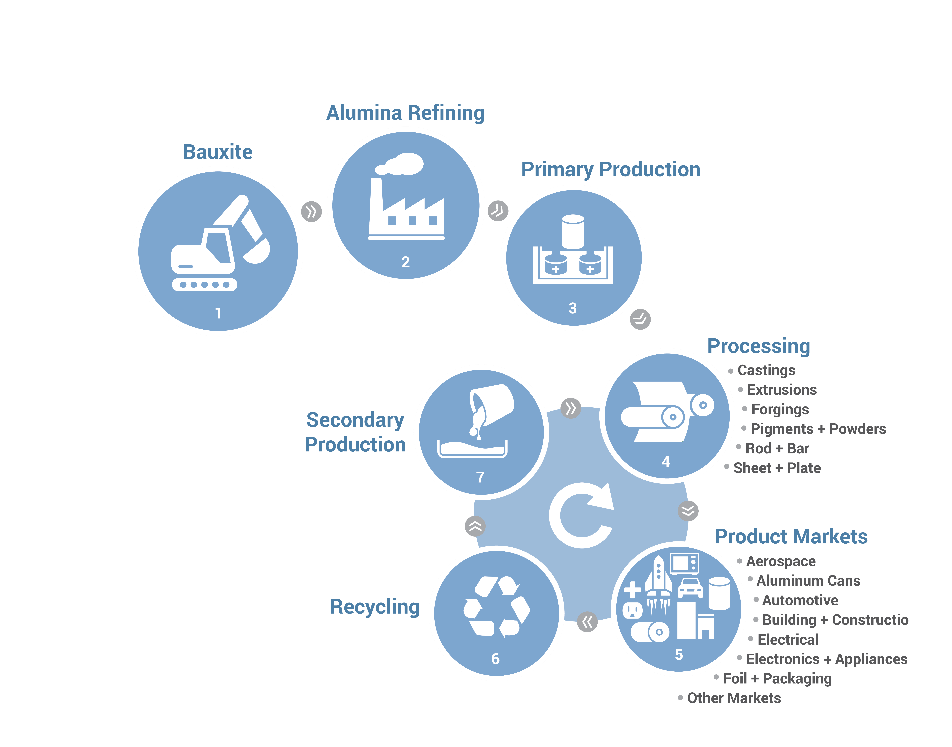Aluminum Production and Processing
Primary production involves mining bauxite deposits from the earth, chemically refining it into pure aluminum oxide and performing electrometallurgical processing to ultimately form aluminum.
Secondary production makes new aluminum from recycled scrap that for many products, like cans, is completely suitable for the same high quality.
From there, different processing methods and alloys are used to form this versatile metal into its desired shape, strength and density.
- Molten aluminum obtained from either of these sources is cast into ingots, billets or into a final shape.
- Sand, permanent mold and die casting, convert the molten metal into final form requiring minimal machining. Low to high volume production generally determine which of these methods are most cost effective.
- Sheet ingots, often referred to as slabs, are rolled to make long flat pieces of aluminum plate, sheet or foil. These “semi-fabs” are often used in transportation applications such as cars, planes and trains and also in consumer packaging for cans and foil.
- When strength and precision are needed, aluminum can be forged by compressing the metal between dies to produce parts such as racecar wheels.
- Extrusion is used to form longer, thinner pieces of aluminum called rod, bar or wire, often used in the building industry. Extruded shapes also find their way into buildings, cars and other forms of transportation.
Find out about all the different end-use products the aluminum industry produces

